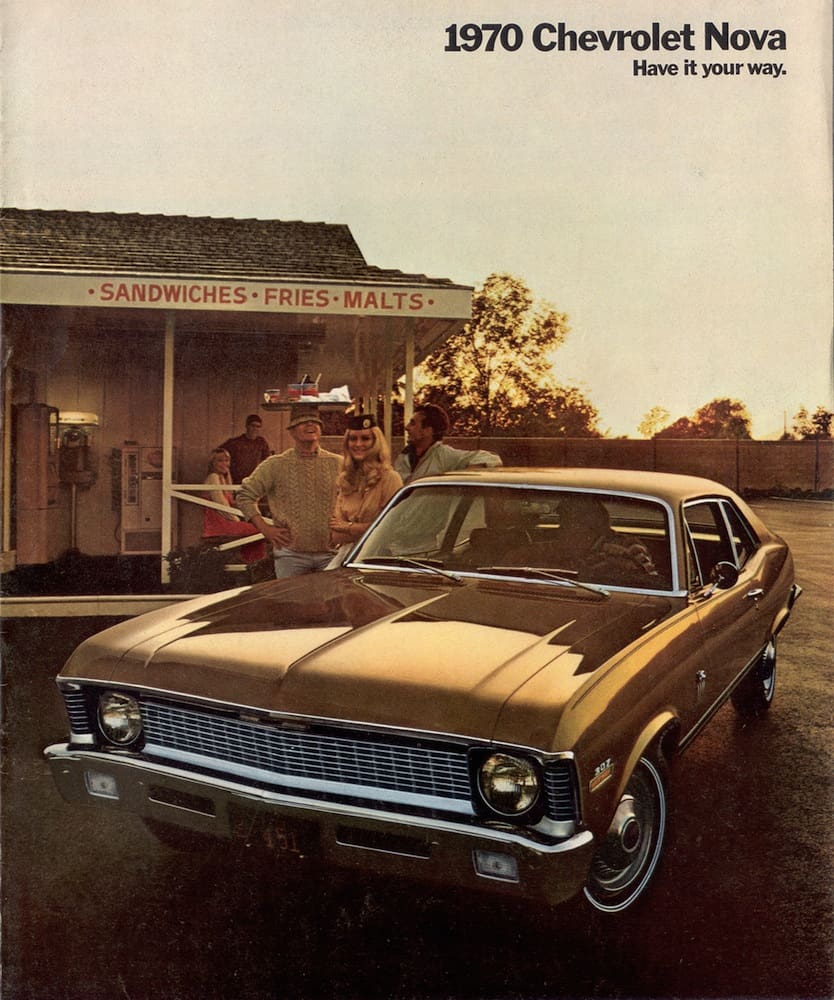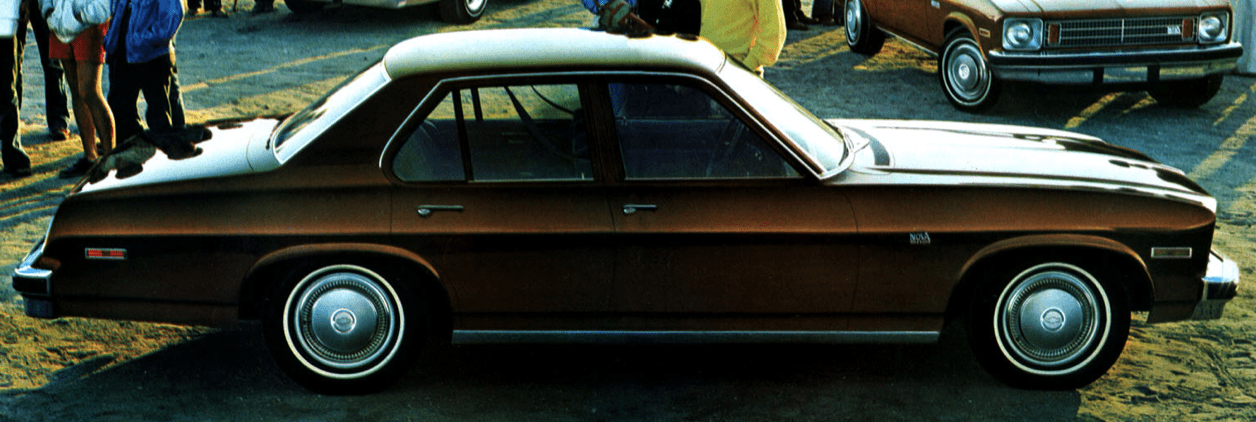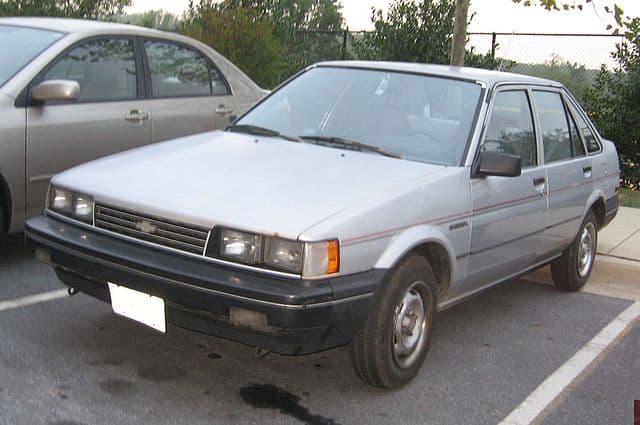Today, most folks think of the Nova as a hot rod. That was not Nova. Nova was as an economy car first. Most units that were produced were not big block beasts. Rather, they were cars made to sip gas and save weight.
They had six cylinder engines and were considered rather disposable, like the Chevy Cavalier was a few years ago (we are not suggesting you hold on to a Cavalier until it pays for your retirement).
Beginnings
The Corvair was a flop. The Ford Falcon was selling like crazy. GM was surprised by the success of the Falcon, and found itself scrambling to play catch up with its Detroit rival. GM needed an answer to it. The Chevy Nova was the answer.
The time of the first design to production took 18 months, which is still impressive to this day. If you look at the Falcon and Nova next to one another, there certainly is no doubt that GM may have borrowed a few ideas from the Falcon.
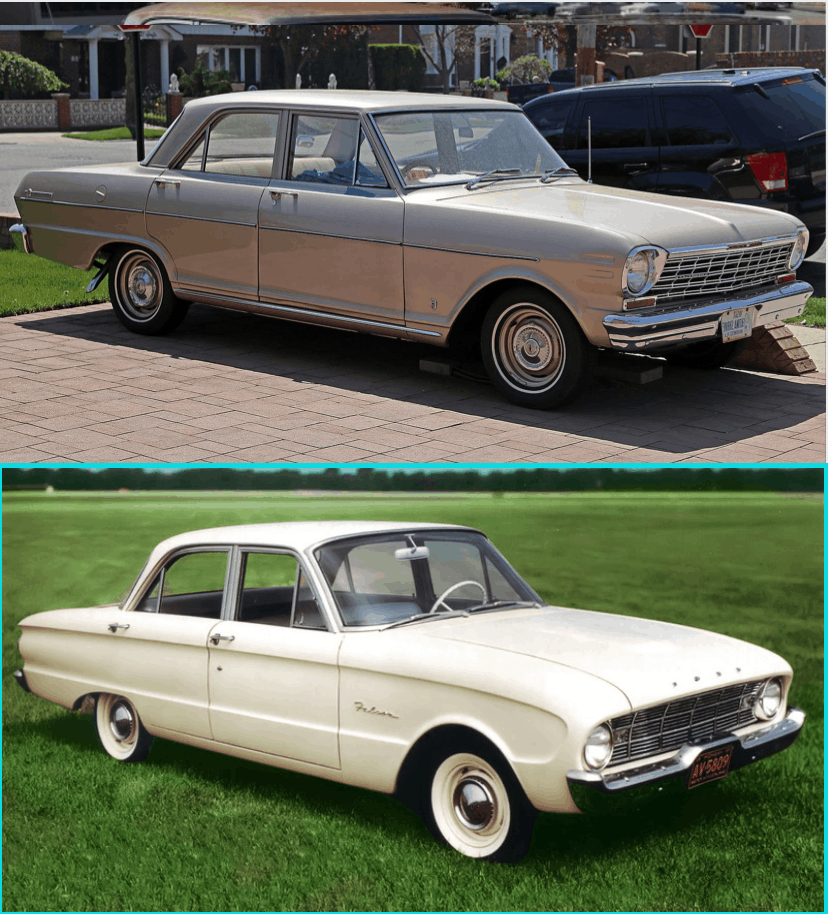
Gen 1: 1962-1965
The first generation Nova was available in almost every conceivable way, including:
- 2 Door (Sedan, Hardtop, Convertible)
- 4 Door Sedan
- 4 Door Station Wagon
Originally, the Nova rolled off of the assembly with no V8 option whatsoever, with the largest engine size being an inline six. It wasn’t until 1964 that a V8 was an option, when it got the 283 cubic inch small block Chevy rated at 195 hp (gross) and 285 lb-ft of torque.
While 195 hp may not be a lot by today’s standards, or the standards of the 1960’s, the Chevy-II was well under 3000 lb, even with the V8 option making it pretty fast by the days standards.
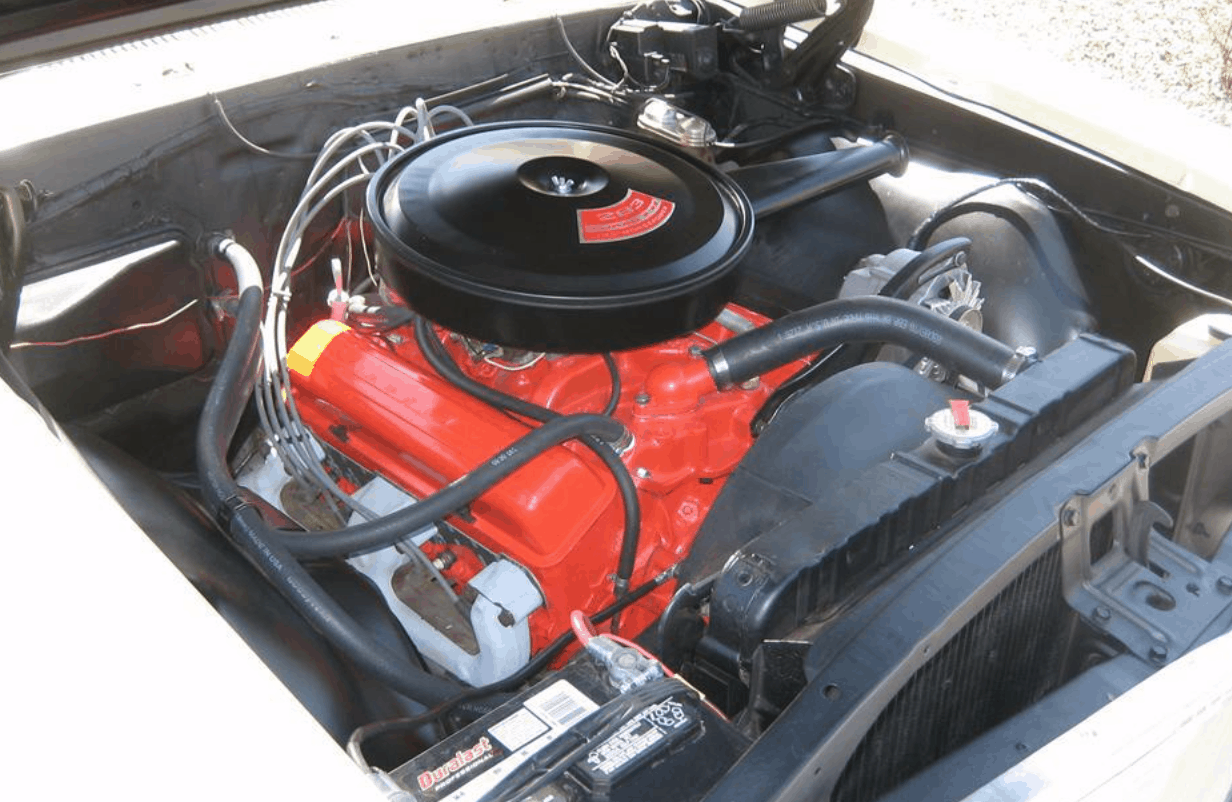
Chevy-II used a unibody design to keep weight and cost down. The Nova was a trim line, and not the official name of the car. Chevy-II would continue to be the name of the car through 1968, which was the final year for it.
In 1965 the Nova received a bit of a facelift, wherein the front grill was made the full width of the front of the car. The headlight bezels were integrated into the design and the parking lights were changed.
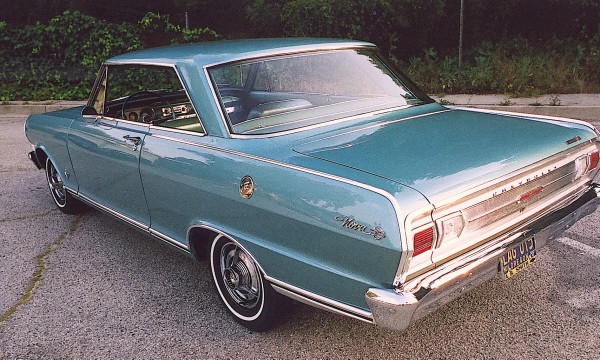
1966-67: Redesign and Power
1966-1967 are loved for their beautiful design. This generation retained the boxy look of its predecessor while giving it a more elegant look.
In 1966 the Nova SS received the 327 cubic inch small block Chevy, which was rated at 300 gross horsepower. With this engine the Nova was firmly dipping its foot (tire?) into the muscle car wars. With its relatively light curb weight, the SBC was able to outrun heavier/higher horsepower cars, making it a favorite of drag racers.
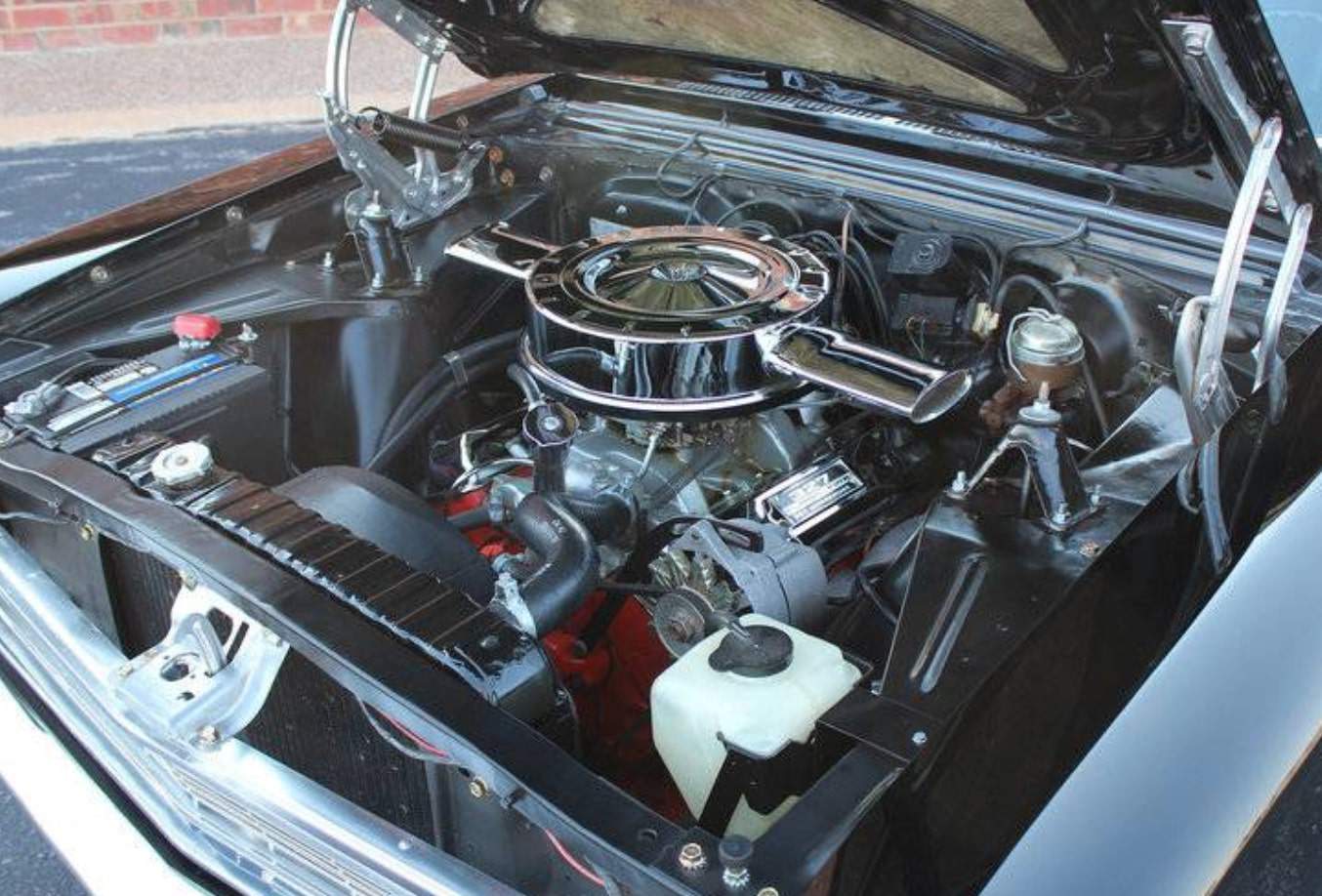
For the most part, 1967 was a carryover of the 1966 model. There were some differences in trim. The Nova name was featured even more prominently, and there were many federally mandated safety improvements.
1968-74: Dropping Chevy II Name
68-69
The 1968 Nova was a radical departure from both of the previous generation Nova’s. It featured a fastback and rounded “European” styling. The wheelbase was extended and inch to 111 inches total.
This body style dropped the station wagons from the lineup and had enough room to fit a big block Chevy engine. The styling of the 68-74 Nova remained consistent for the most part. 1968 had a one year dash that had the key going into it still.
Although there were less body styles, the Nova had more engine choices than ever. Over the course of production there was one anemic I4 engine, three different I6’s, three small block V8’s, and one big block. The largest engine available directly from the factory was the 396.
In 1969, the Chevy II badging was officially retired by GM. The slow transition to the Nova name that had started a few years earlier was now completed.
Camaro and Nova
The first generation Camaro borrowed a lot of the parts and design of the third generation Nova, even though the Camaro came out a year earlier.
Ford did a great job of keeping the Mustang project under wraps. If GM were to have designed it from the ground up, it would have taken them years longer to do. Borrowing from the Nova helped to expedite the process.
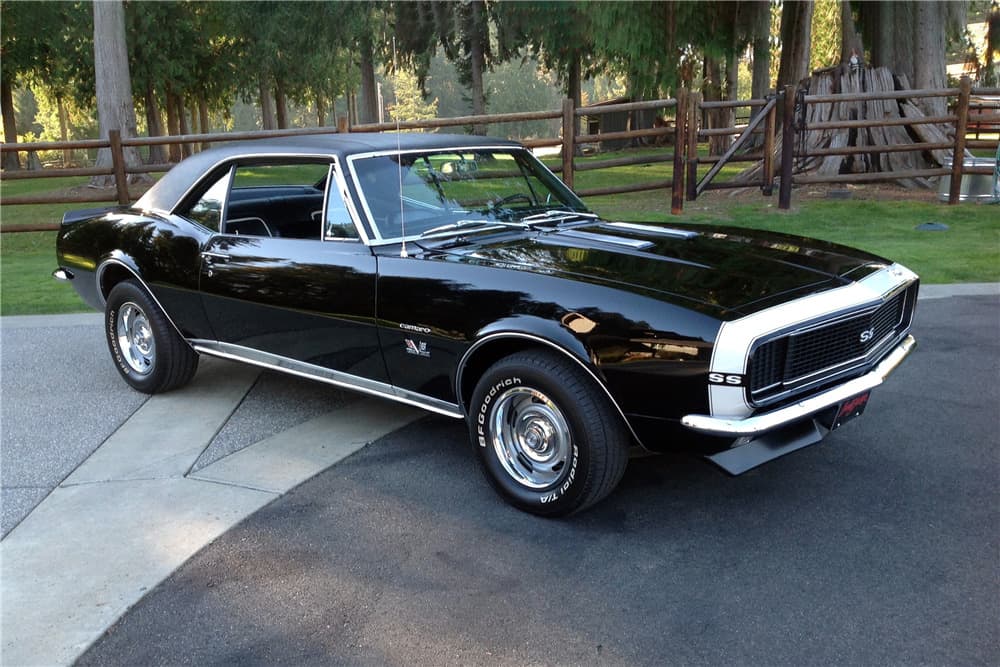
COPO Nova
The GM COPO (Central Office Production Order) program was a back door that allowed certain people to order the NOVA with a larger engine than was offered by at the dealership.
Yenko Nova
Yenko Chevrolet ordered most of these COPO Nova’s and built 38 Yenko Novas in 1969 and 175 in 1970. Yenko cloning is one of the most popular things to do to an old Nova right now. Original Yenko Nova’s are approaching the six figure mark.
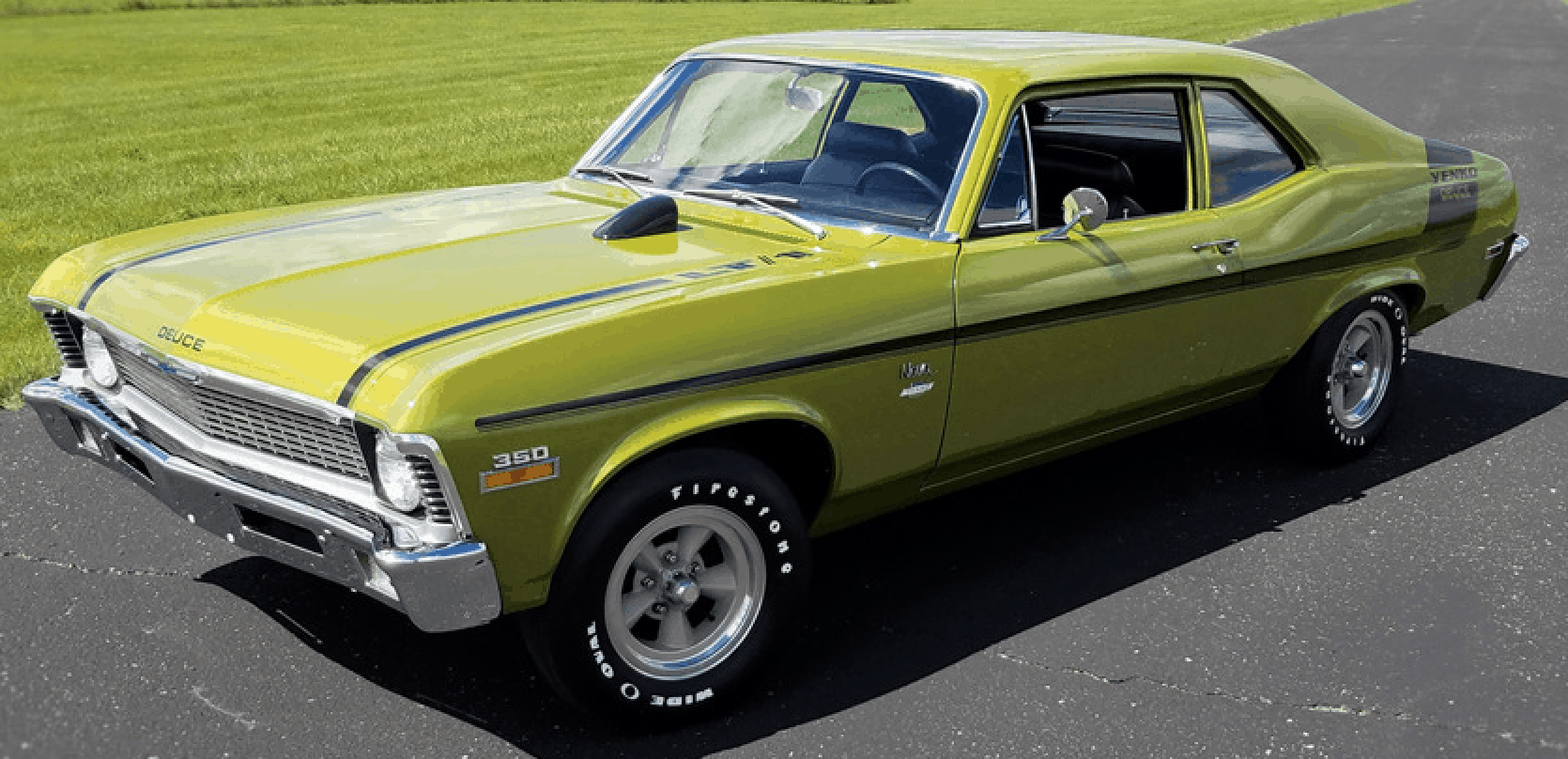
70-72
1970 brought larger side marker lights and revised tail lights. Other than that, there really weren’t many changes from the earlier Gen III Nova’s.
With increasing pressure for tighter pollution control, and insurance companies cracking down, 1971 saw the end of the big block in the Nova. The Nova SS now came with a 350 cubic inch small block.
’71 also saw the advent of the “Rally Nova”, which looked sporty, but in reality was just an appearance package. In 1972 the Rally Nova outsold the SS almost 3 to 1 (33,319 vs 12,309).
1972 was one of Nova’s best years in terms of units sold. Chevrolet sold 349,733 of them.
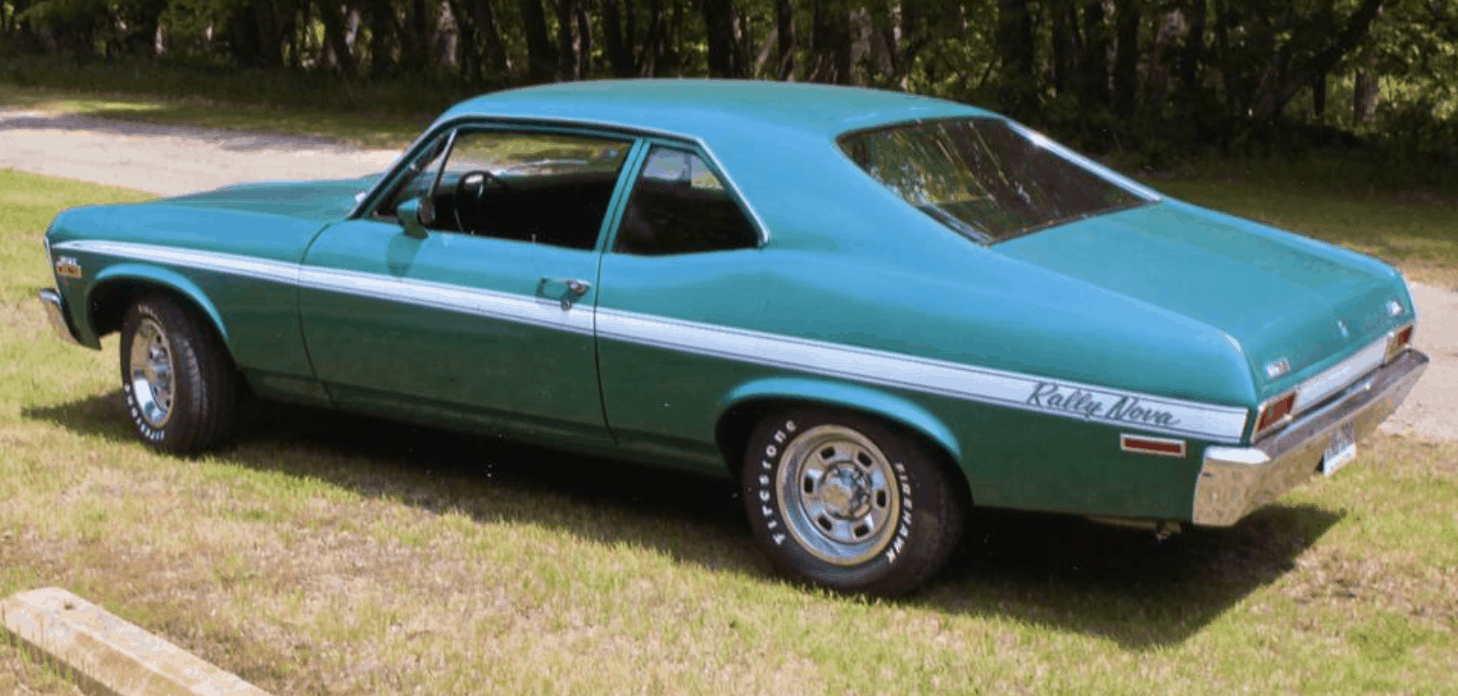
73-74 DOT-ification
The 1973 Nova received a hatchback option, along with many other cosmetic changes. The bumpers needed to completely absorb the low speed impact of 2.5 MPH (5MPH in ’74). This gave them a much larger and squared off appearance.
In 73′ the Nova SS was relegated to an appearance package that came with Rally wheels and a darker grill.
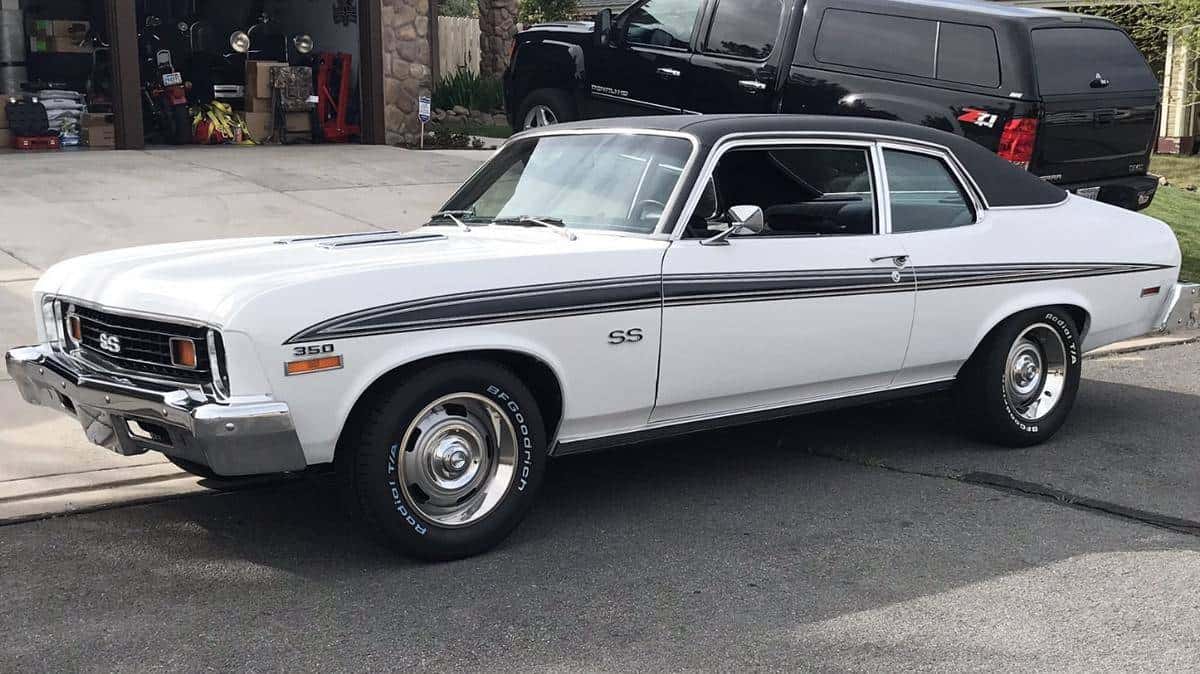
For 1974, the Nova got even larger DOT crash test mandated bumpers. They now needed to protect from an impact of 5 MPH.
Although the 73-74 Nova does not command nearly the premium that the 68-72 models do, they sold VERY well when they were new. In 1974 production neared 391k units.
Gen 4: A Nova for a Different Time
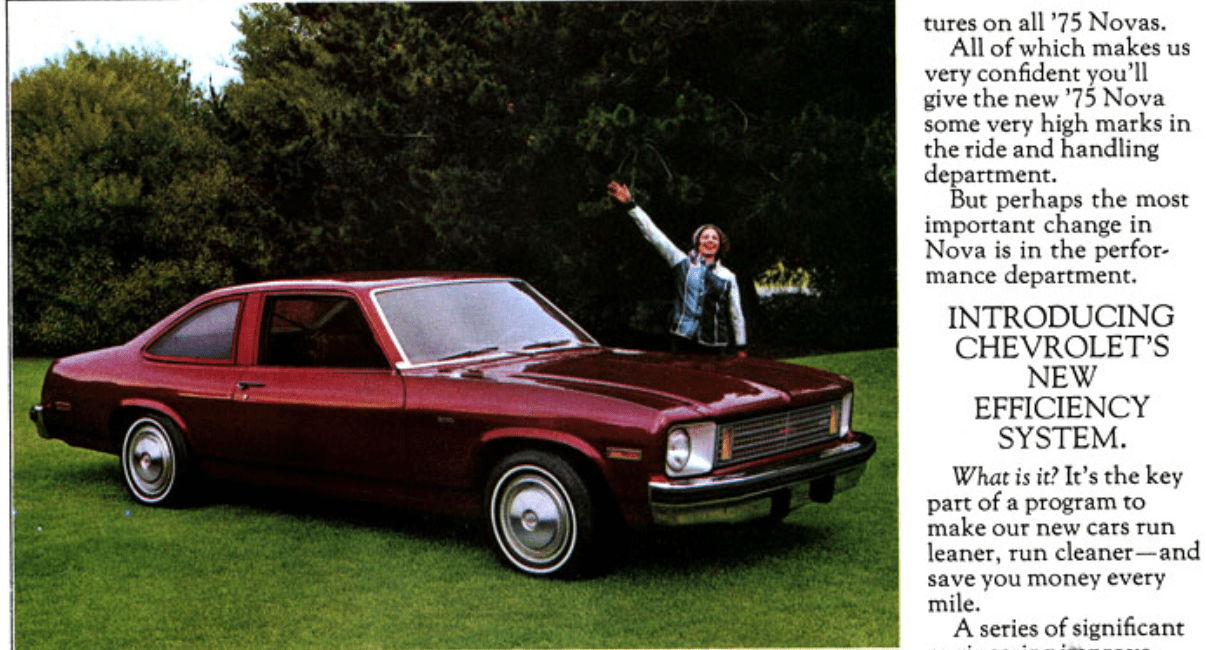
1975 saw an all new design. It had a much boxier look to it. This helped Nova better integrate the DOT crash protection. This was the final continuous generation of the Nova.
The wheelbase stayed the same, and the design recalls the previous Gen II Nova, while at the same time having a more modern (at the time) look.
While arguably not as stylish as the 68′ Nova, the 1975 was a much improved car from a safety and comfort perspective. It had a quiet cabin, more tire tread, standard front disk brakes, radial tires, and multi leaf suspension.
Emphasis was placed on the upscale market as Chevy introduced the LN “Luxury Nova” package. Introduced in 1975, the idea was to make an upscale version of the Nova that could compete with the European luxury cars that were being steadily imported.
In 1976 this LN package was renamed the Concours Nova. This steered it into line with the Big 3’s other small luxury cars.
By 1977 the most powerful engine available in Nova was the 350. Smog rules had choked the Net horsepower rating down to 170.
Sales for Nova’s entire life were strong. In 1978 GM still sold 288,000. By 1979, the GM A-Body had downsized to the same level as the Nova.
The A-Body was home to the new 78′ and up Malibu and Monte Carlo. There wasn’t room for 3 cars of the same size, so Chevy cut the Nova. Final year of sales was 98,000. Nova was replaced by the Citation.
“Generation 5”: NUMMI Nova
The Nova badge was resurrected in 1985 for a new compact car that was a joint venture between General Motors and Toyota. This venture was known as NUMMI. The NUMMI Nova was a rebadged Toyota Corolla. There were subtle style differences, but for all intents and purposes, it was a Corolla.
Much like the Chevy II became the Nova, this Nova became the Geo Prizm.

